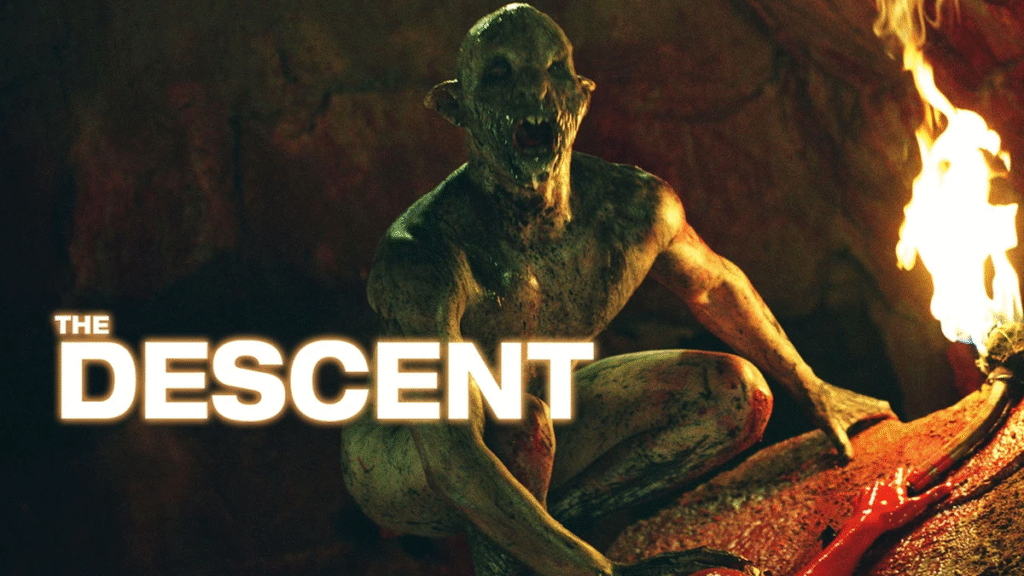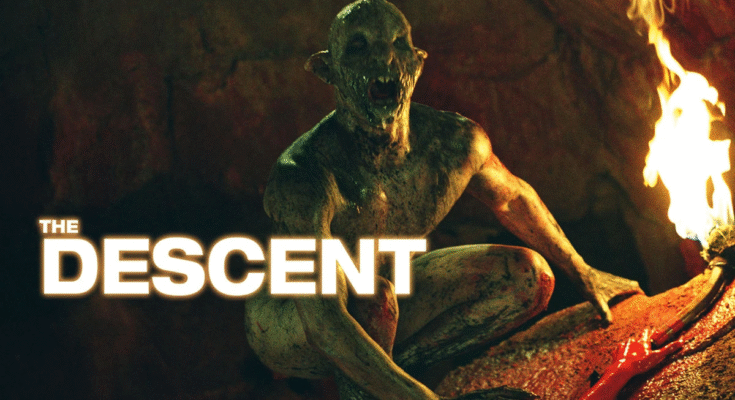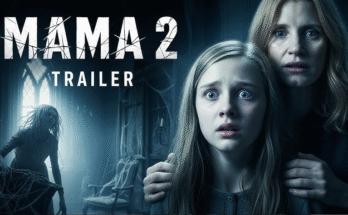When science replaces fear with curiosity, horror finds its way back. The Descent: Evolution resurrects Neil Marshall’s claustrophobic nightmare for a new generation — not as a sequel of survival, but as a descent into humanity’s forgotten DNA. This is evolution gone feral, terror reborn in fluorescent veins and echoing screams.

Set years after the original caving tragedy, the film follows a biotech expedition led by Dr. Mara Ellison (Rosamund Pike) — a geneticist obsessed with understanding the truth behind the “creatures” that slaughtered her sister’s team decades ago. The discovery of a blood sample deep in the Appalachians leads her and a crew of researchers into a newly revealed chasm — one that wasn’t supposed to exist.
The first act simmers with scientific awe. The crew’s drones map bioluminescent tunnels while sonar reveals movement too rhythmic to be natural. Marshall’s direction (returning in full control) reclaims his trademark tension — long, breathless tracking shots where the light of a single flare becomes the only boundary between logic and panic.

Then comes the revelation: the creatures weren’t born monsters. They were human. A subterranean offshoot of evolution, sealed away by seismic collapse centuries ago — a lineage that adapted to blindness, echolocation, and predation. Their world isn’t just a cave system; it’s a biosphere. And it’s expanding.
As the expedition pushes deeper, their communication falters. Radio waves distort. Voices repeat themselves seconds after they’re spoken — not as echoes, but mimicry. The realization lands hard: the creatures are learning them.
Rosamund Pike is exceptional, her performance balancing intellect with terror. Her Mara is a woman of reason, unraveling before the irrational. Opposite her, Lakeith Stanfield plays Theo, a survivalist-turned-engineer who distrusts science as much as the dark. Their dynamic — faith versus reason, instinct versus intellect — forms the heartbeat of the story.

Marshall spares no brutality, but every drop of blood serves a purpose. The kills are swift, primal, and deeply unsettling. A scene involving a bioluminescent pool and a reanimated corpse ranks among the most visually stunning — and horrifying — moments in modern horror.
The production design is breathtaking: phosphorescent moss, pulsing walls, tunnels breathing with unseen motion. The creatures’ redesign blends practical prosthetics with minimal CGI — elongated limbs, translucent skin, and faces caught halfway between human and hive. The result is a terrifying evolution of fear itself: recognizable enough to disturb, alien enough to paralyze.
The score by Ben Lovett replaces orchestral dread with industrial pulse — bone crackles, metallic shrieks, and sub-bass tones that feel like the earth’s heartbeat.
The final act turns from survival to revelation. The team discovers a chamber of carvings — a warning left by the creatures’ ancestors, depicting their descent from the surface. Humanity, it seems, didn’t just abandon them. It created them. And as the earth shifts again, the caves begin to open toward civilization.
Mara’s final words, whispered into a broken radio, encapsulate the film’s existential terror:
“We didn’t find them. They’re coming home.”
The screen fades to black. Then, a faint clicking sound — the creatures’ sonar call — pulses beneath the end credits.
💬 Film Verdict:
⭐ 4.8/5 (9.5/10) — A masterful evolution of modern horror. “The Descent: Evolution” fuses science and nightmare into something mercilessly beautiful — proof that the most terrifying monsters are the ones still carrying our genes. 🧬💀




